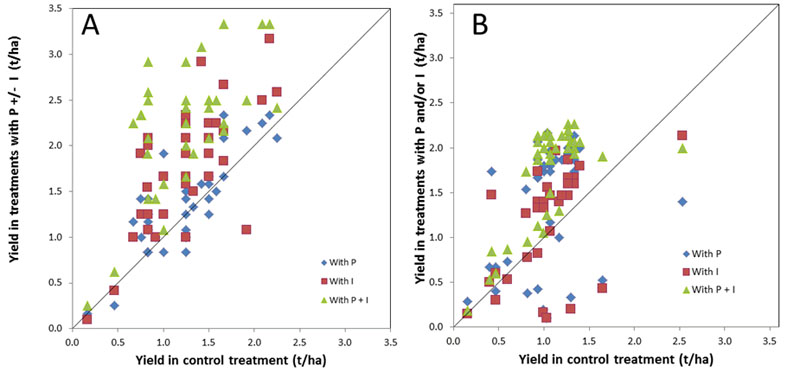Agronomic trials conducted for two seasons in East and Central Africa and for one season in West and Southern Africa are yielding interesting results. We have observed a lot of variations in crop yields within treatments, between farms and across agro-ecological zones. We attribute this huge yield variation with the existing soil fertility and management gradients as well spatial and temporal environmental differences. For example, at Mushomo site in-DRC soybean yields in the control treatments varied enormously between different farmers; from 200 kg/ha to 2500 kg/ha. The application of P fertiliser led to 43% of the fields having a yield increase of more than 10%, relative to the control treatment (Figure 1A). However, in 20% of the cases, yields were actually decreased by more than 10% in treatments with phosphate application only. Soybean treated with inoculant gave a grain yield that was more than 10% higher than that in the control treatment in 83% of the fields. The application of P fertiliser and inoculant gave a yield increase of more than 10% in 94% of the fields. The results show that, at this site, the use of inoculant alone had a stronger and more consistent impact on grain yield than the use of P fertiliser only, while the combination of P fertiliser and inoculant inputs gave the highest yield increases.
Almost the same trend was observed in Nigeria in villages within Kano state (Figure 1B). There are other sites where soybean grain yields were generally low (less than 1.2 t/ha) and no consistent impact from P fertiliser or inoculant inputs and others where low yields coincide with a lack of response to P and inoculant inputs, probably because other limiting factors are overriding.

